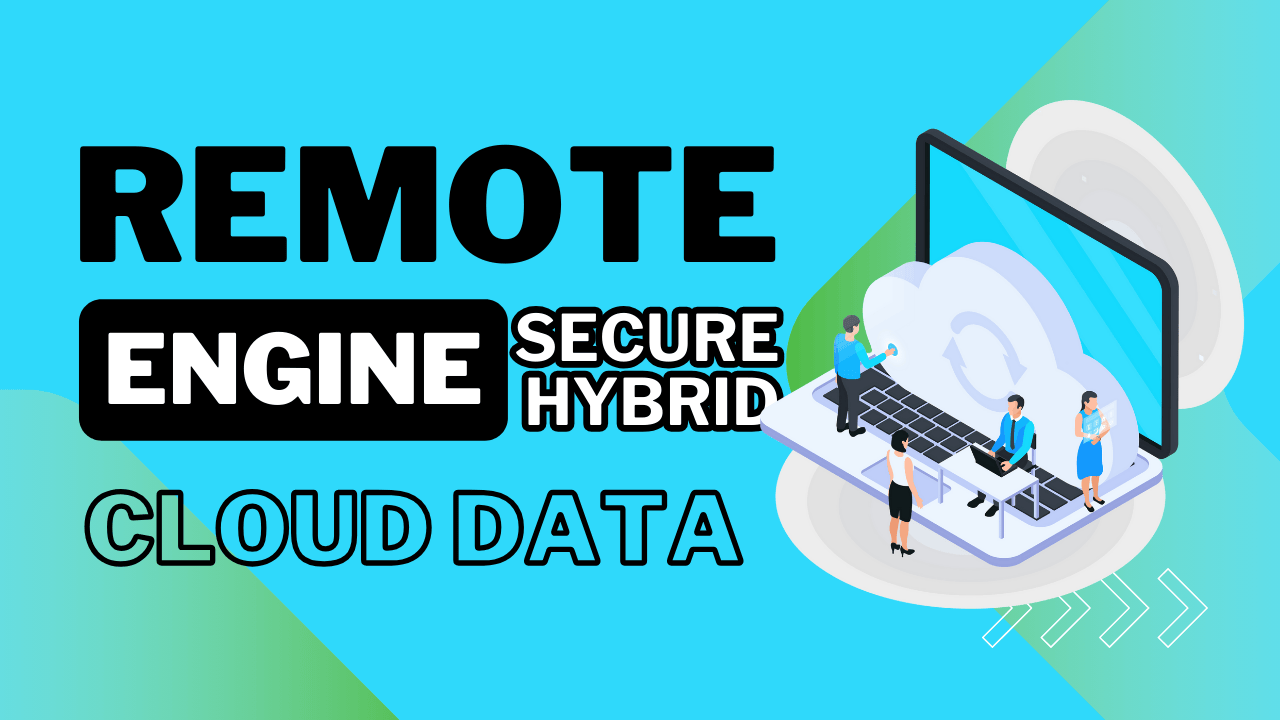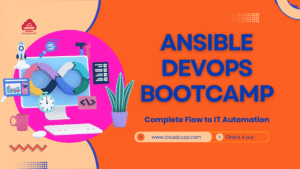Key Takeaways:
- Cost Savings: Remote engines cut expenses by processing data locally, avoiding pricey cloud egress fees and potentially saving up to 30% on data transfer costs.
- Enhanced Performance: By running tasks near data sources, they slash latency and autoscale to handle workloads, boosting processing speed by up to 50%.
- Robust Security: Keep sensitive data like financial or health records safe behind your firewalls, ensuring compliance without risky data movement.
- Flexible Management: Design jobs once in a central control plane and run them anywhere – on-premises, cloud, or edge – for seamless operations.
- Easy Updates: Containerized setups allow quick, disruption-free updates, like swapping a filter, keeping your data processing smooth and modern.
In a hybrid cloud setup, you might have databases tucked away on your company’s own servers (that’s on-premises), apps buzzing away in the cloud, and sensors on edge devices gobbling up info from the real world. Pulling all that together without making a mess? That’s where remote engines step in like a superhero sidekick.
In this article, I’ll break down remote engines in simple, everyday language – no tech jargon overload, I promise. We’ll chat about what they are, how they work, why they’re a game-changer for secure hybrid cloud data integration, and toss in some real-life analogies, examples, and even a bit of code to make it stick. By the end, you’ll feel like you’ve got a handle on this stuff, whether you’re a data newbie or just curious. Let’s dive in!
On This Page
Table of Contents
Understanding the Data Landscape: Why Integration Matters
First off, let’s set the scene. Data is the lifeblood of modern businesses, but it’s not always easy to manage. Think of it like water in a city: it flows from rivers, lakes, and reservoirs, gets treated, and then delivered to homes. But what if the water sources are spread out, and moving it all to one central spot costs a fortune or risks contamination? That’s the challenge with data integration in a hybrid cloud world.
- On-premises databases: These are like your home’s private well – secure, but limited to your property.
- Cloud applications and analytics: Picture these as public reservoirs in the sky (the cloud), scalable but sometimes pricey to access.
- Edge devices: These are sensors on the “edge” of your network, like rain gauges in remote fields, collecting data in real-time.
Organizations need to integrate this data – combine, clean, and analyze it – without hauling everything to a single location. Moving data around can be slow, expensive, and risky. Enter remote engines: they let you process data right where it sits, making integration smarter and safer.
To make this relatable, let’s use a real-world analogy: managing water in a big city versus in your own home. In a traditional setup, all water goes to a central plant for treatment. But what if you install a filter right under your kitchen sink? You treat the water locally, saving on transport costs and keeping things under your control. Remote engines are that home filter for data – they handle processing in your own space, whether it’s on-premises or in your cloud corner.
What Exactly Are Remote Engines?
At their core, remote engines are like mini powerhouses you set up and run in your own backyard. They’re execution environments – basically, software setups that handle data integration and data quality tasks without needing to ship data far away.
Here’s a simple breakdown:
- Deployment: You install them in your systems, such as on-premises servers or your virtual private cloud (VPC).
- Control: You manage the resources, but they’re designed to run tasks efficiently.
- Purpose: Keep workloads close to data sources, avoiding unnecessary movement.
Unlike a fully centralized system where everything happens in one “hub,” remote engines follow a distributed model. They’re often containerized (think of containers as portable boxes that hold apps), making them flexible to deploy anywhere – Kubernetes clusters, cloud environments, or even edge setups.
Tip: If you’re new to containers, start small. Tools like Docker can help you experiment with containerized apps on your local machine before scaling up.
To visualize this, let’s look at a table comparing traditional data integration to remote engines:
| Aspect | Traditional Central Integration | Remote Engines Approach |
|---|---|---|
| Data Movement | Data travels to a central hub for processing. | Processing happens where data lives – minimal movement. |
| Cost | High due to data transfer fees (e.g., cloud egress). | Lower, as data stays local. |
| Security | Risk of exposure during transit. | Data processed behind firewalls. |
| Scalability | Fixed resources; hard to scale on demand. | Auto-scales with workloads. |
| Management | Everything in one place, but can be a bottleneck. | Centralized design, distributed execution. |
This table shows why remote engines are gaining traction – they’re adaptable to the messy reality of hybrid clouds.
How Remote Engines Work: The Nuts and Bolts
Okay, let’s get into the mechanics without overcomplicating it. Remote engines split the work into two main parts: the control plane (where you plan and design) and the data plane (where the action happens).
- Control Plane: This is your command center – a centralized, managed platform where you design jobs. It’s like sketching a blueprint for a house.
- Data Plane: Here’s where remote engines live. You deploy a containerized app in your environment. Inside, there’s a “conductor” that orchestrates tasks and “compute pods” that do the heavy lifting.
The magic? Separation of design time (planning) and runtime (execution). You build your data integration jobs in the control plane, compile them into code, and send instructions to the remote engine for execution.
Let’s use an example: A basic ETL (Extract, Transform, Load) job.
Imagine you have two data sources – say, sales data from an on-premises database and customer info from a cloud app. You want to combine them, apply some transformations (like calculating totals), and load into a target analytics tool.
In code terms, here’s a simple Python pseudocode example using libraries like Pandas (for data handling) to illustrate an ETL process. (Note: This is conceptual; in real remote engines, it’d be handled by tools like Informatica or Talend, but this shows the logic.)
import pandas as pd # For data manipulation
# Extract: Pull data from sources
source1 = pd.read_csv('on_prem_sales.csv') # On-premises data
source2 = pd.read_json('cloud_customers.json') # Cloud data
# Transform: Combine and clean
merged_data = pd.merge(source1, source2, on='customer_id') # Join on common key
merged_data['total_sales'] = merged_data['quantity'] * merged_data['price'] # Calculate new column
merged_data = merged_data.dropna() # Remove missing values
# Load: Write to target
merged_data.to_sql('analytics_target', engine=some_database_engine) # Load to database
print("ETL job completed!")In a remote engine setup, this code wouldn’t run in the control plane. Instead:
- Design the job visually or via code in the control plane.
- Compile and send to the remote engine.
- The conductor pod assigns tasks to compute pods, which execute near the data sources.
Real-world analogy: Building a Lego set. You design the model (control plane) using instructions, but assemble it in different rooms (data plane) where the pieces are stored. No need to carry bricks back and forth!
Tip: When setting up, choose Kubernetes for orchestration if your team is cloud-savvy – it handles auto-scaling like a pro.
Key Benefits of Remote Engines
Why bother with remote engines? They tackle three big pain points: cost, performance, and security. Let’s unpack each.
1. Cost Efficiency
Moving data isn’t free. Cloud providers slap on egress fees – charges for data leaving their network. If you’re shuffling millions of rows daily, it adds up fast.
Remote engines fix this by processing data in the same environment where it resides. For instance, run data quality checks (like spotting errors or duplicates) right there, saving bucks.
- Example: A retail company with data in AWS and on-premises. Without remote engines, syncing to a central Azure hub costs $0.09/GB in egress. With them, process in AWS – zero extra fees.
- Analogy: Like buying groceries locally instead of shipping from across the country. Cheaper and fresher!
Tip: Monitor your cloud bills monthly. Tools like AWS Cost Explorer can highlight where egress fees bite, pushing you toward remote engines.
2. Performance Boost
Data travel = delays. Networks get clogged, especially with big datasets.
Remote engines execute jobs close to sources, slashing latency. Compute pods autoscale: Ramp up for heavy loads (e.g., end-of-month reports), then downsize.
- Bulleted perks:
- Handles from one job to thousands dynamically.
- Distributes workloads intelligently.
- Tune parameters for efficiency, like adjusting pod counts.
Example: In IoT (Internet of Things), edge devices collect sensor data. A remote engine processes it on-site, feeding insights to the cloud without bottlenecks.
Analogy: Traffic in a city. Instead of funneling all cars to one highway (central processing), use local roads (remote engines) for faster flow.
Here’s a quick table on scaling:
| Workload Size | Traditional Response Time | Remote Engine Response |
|---|---|---|
| Small (1-10 jobs) | 10-20 minutes | 2-5 minutes |
| Medium (100 jobs) | 1-2 hours | 10-30 minutes |
| Large (1000+ jobs) | Several hours | 30-60 minutes (with autoscaling) |
Tip: Test autoscaling in a dev environment first. Simulate bursts to ensure pods spin up without hiccups.
3. Enhanced Security
This is the biggie. Sensitive data – think financials, health records, or trade secrets – can’t wander. Regulations like GDPR or HIPAA demand it stays protected.
Remote engines deploy behind firewalls, creating secure connections. Data never leaves your perimeter.
- Example: A hospital processes patient data on-premises. Remote engine runs analytics there, sending only anonymized summaries to the cloud.
- Analogy: Back to water – filtering in your apartment means contaminants stay out of your glass, all within your walls.
Tip: Always enable encryption for connections. Use VPNs or private links to keep things locked down.
Deployment and Management: Keeping It Simple
The cool part? Remote engines are containerized, so updates are a breeze – no big downtimes like old-school systems.
- Update Process:
- Patch the container image.
- Conductor rolls out new pods gradually.
- Old ones shut down once stable.
Analogy: Swapping a water filter cartridge. Do it when convenient; water keeps flowing.
You manage everything from one control plane: Design once, run anywhere. This hybrid pattern shifts from “hub-and-spoke” (everything central) to respecting data’s natural home.
Coding Example for Management: If using Kubernetes, a simple YAML config might look like this for deploying a remote engine pod:
apiVersion: v1
kind: Pod
metadata:
name: remote-engine-conductor
spec:
containers:
- name: conductor
image: your-remote-engine-image:latest # Update this for patches
resources:
limits:
cpu: "2"
memory: "4Gi"This deploys the conductor; scale replicas for compute pods as needed.
Tip: Automate updates with CI/CD pipelines – tools like Jenkins can push new images seamlessly.
Real-World Applications and Examples
Let’s ground this with stories.
- Finance Sector: A bank uses remote engines to integrate transaction data across branches (on-premises) and cloud fraud detection. No data leaves secure zones, cutting costs by 30% on transfers.
- Manufacturing: Edge sensors on factory machines feed data to remote engines for real-time quality checks. Analogy: Like on-site inspectors versus shipping products to a distant lab.
- E-commerce: During Black Friday, remote engines autoscale to handle order data spikes, processing in the cloud where inventory lives.
Tip: Start with a pilot project. Pick one data source, deploy a remote engine, and measure gains before going full-scale.
Challenges and How to Overcome Them
No tech is perfect. Potential hiccups:
- Setup Complexity: Containers needs to be configured.
- Solution: Use managed Kubernetes services like Amazon EKS.
- Monitoring: Track performance across planes.
- Solution: Integrate tools like Prometheus for alerts.
Analogy: Installing that home water filter – might need a plumber first time, but then it’s smooth.
Wrapping It Up: The Future of Data Integration
So, there you have it – remote engines are your ticket to smarter, safer hybrid cloud data integration. They keep data processing local, slashing costs, boosting speed, and locking down security, all while letting you manage from one spot. Like that trusty apartment filter, they make the complex feel simple.

FAQs
What exactly are remote engines?
Remote engines are like little processing stations you set up in your own space to handle data tasks. Instead of moving all your information to a far-off central spot, these engines work right where your data is stored – whether that’s on your company’s servers, in the cloud, or even on devices at the edge of your network. It’s a way to mix and clean up data without shipping it around, making things safer and quicker.
How do remote engines help with hybrid cloud setups?
In a hybrid cloud world, your data is split between private servers (on-premises) and public cloud services. Remote engines let you connect and process that scattered data without forcing everything into one place. Picture it like having mini kitchens in different rooms of a house – you cook where the ingredients are, avoiding the hassle of carrying pots everywhere.
Why should I care about using remote engines for data integration?
Data integration is just combining different bits of info to make sense of it all. Remote engines make this easier by keeping the work local. This saves money (no big transfer fees), speeds things up (less waiting for data to travel), and boosts security (sensitive stuff stays behind your protective walls). For example, if you’re a business dealing with customer records, you can analyze them without risking leaks.
What’s the difference between designing and running jobs in remote engines?
There’s a smart split: You plan and create your data tasks (like sorting or transforming info) in a central “control center” that’s easy to use and managed for you. But the actual work happens on the remote engine, close to the data. It’s like drawing up a recipe in your notebook at home, then cooking it in a friend’s kitchen where all the spices are.
How do remote engines save money?
Cloud companies often charge extra when data leaves their system – kind of like tolls on a highway. By processing data in the same spot it lives, remote engines avoid those fees. Plus, you only use computing power when needed, scaling up or down automatically. A real example: A company moving huge daily reports could cut costs by half just by staying local.
Are remote engines good for performance?
Absolutely! Moving data over networks can cause slowdowns, like traffic jams during rush hour. Remote engines run tasks right next to the data, so everything happens faster. They can handle small jobs or massive ones by adding more “workers” (called pods) on the fly, then shrinking back when done. Imagine a team of helpers that grows for a big party and shrinks for a quiet dinner.
How do they improve security?
Security is huge because some data, like health or financial details, can’t leave certain areas due to rules or risks. Remote engines let you process it behind your own firewalls, so nothing sneaks out. It’s like purifying water in your own home filter instead of sending it to a public plant – you control the whole process safely.
Can I manage remote engines easily, even if they’re in different places?
Yes, that’s the beauty! You handle everything from one main dashboard (the control plane). Design once, and run anywhere – on-premises, in any cloud, or at the edge. Updates are simple too, since they’re in containers (portable software packages). Swap in a new version without stopping work, like changing a lightbulb while the room stays lit.
What’s a good analogy for remote engines?
Think of city water treatment. Normally, all water goes to a big central plant. But with a home filter, you treat it right in your apartment – cheaper, faster, and more private. Remote engines do the same for data: local processing with central oversight.
Are there any downsides or tips for getting started?
They’re not perfect – setting them up might need some tech know-how at first, like learning to install that home filter. But once going, they’re low-maintenance. Tip: Start small with one data task, test it out, and expand. Tools like Kubernetes can help with the setup if you’re in the cloud.






